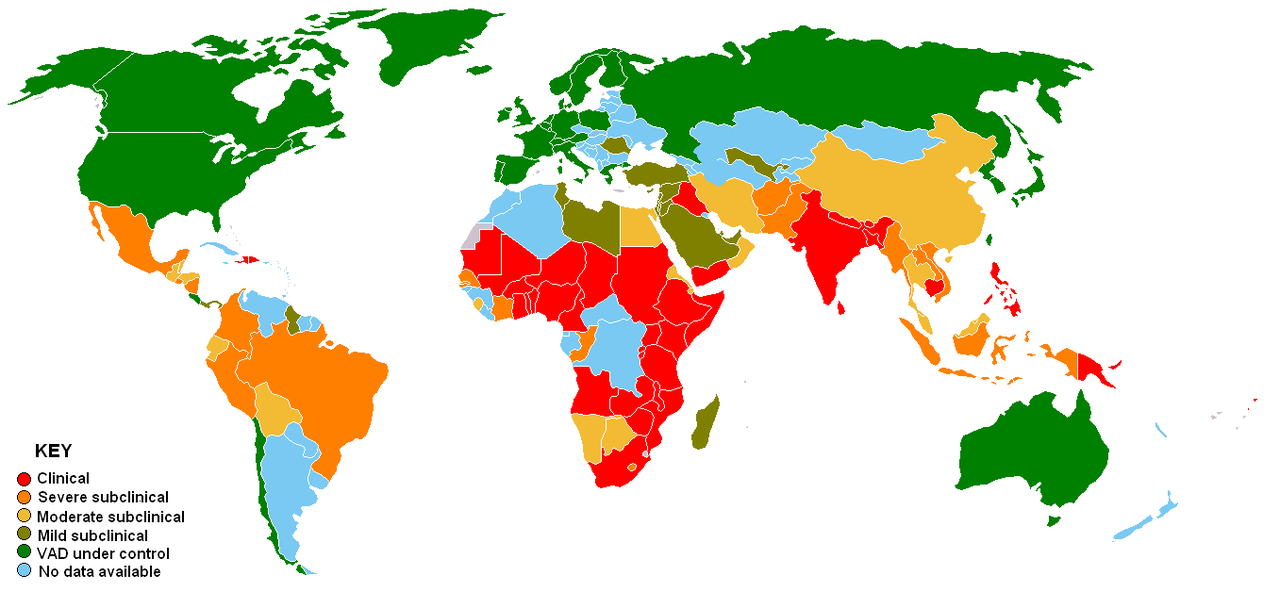All education is self-education. Period. It doesn’t matter if you’re sitting in a college classroom or a coffee shop. We don’t learn anything we don’t want to learn.
Those people who take the time and initiative to pursue knowledge on their own are the only ones who earn a real education in this world.
Take a look at any widely acclaimed scholar, entrepreneur or historical figure you can think of. Formal education or not, you’ll find that he or she is a product of continuous self-education.
If you’re interested in learning something new, this article is for you. Broken down by subject and/or category, here are several top-notch self-education resources I have bookmarked online over the past few years.
Note that some of the sources overlap between various subjects of education. Therefore, each has been placed under a specific subject based on the majority focus of the source’s content.

MIT OpenCourseWare – MIT OpenCourseWare is a free web-based publication of MIT course materials that reflects almost all the undergraduate and graduate subjects taught at MIT.
Tufts OpenCourseWare – Tufts OpenCourseWare is part of a new educational movement initiated by MIT that provides free access to course content for everyone online. Tufts’ course offerings demonstrate the University’s strength in the life sciences in addition to its multidisciplinary approach, international perspective and underlying ethic of service to its local, national and international communities.
HowStuffWorks Science – More scientific lessons and explanations than you could sort through in an entire year.
Harvard Medical School Open Courseware – The mission of the Harvard Medical School Open Courseware Initiative is to exchange knowledge from the Harvard community of scholars to other academic institutions, prospective students, and the general public.
Khan Academy – Over 1200 videos lessons covering everything from basic arithmetic and algebra to differential equations, physics, chemistry, and biology.
Open Yale Courses – Open Yale Courses provides lectures and other materials from selected Yale College courses to the public free of charge via the internet. The courses span the full range of liberal arts disciplines, including humanities, social sciences, and physical and biological sciences.
webcast.berkeley – Every semester, UC Berkeley webcasts select courses and events for on-demand viewing via the Internet. webcast.berkeley course lectures are provided as a study resource for both students and the public.
UC San Diego Podcast Lectures – UCSD’s podcasting service was established for instructional use to benefit our students. Podcasts are taken down at the end of every quarter (10 weeks Fall-Spring and 5 weeks in the summer). If you’re enjoying a podcast, be sure to subscribe and download the lectures. Once the podcast has been taken offline, faculty rarely approve their reposting.
Johns Hopkins OpenCourseWare – The Johns Hopkins Bloomberg School of Public Health’s OpenCourseWare project provides access to content of the School’s most popular courses. As challenges to the world’s health escalate daily, the School feels a moral imperative to provide equal and open access to information and knowledge about the obstacles to the public’s health and their potential solutions.
Carnegie Mellon Open Learning Initiative – No instructors, no credits, no charge. Use these self-guiding Carnegie Mellon materials and activities to learn at your own pace.
Utah State OpenCourseWare – Utah State OpenCourseWare is a collection of educational material used in our formal campus courses, and seeks to provide people around the world with an opportunity to access high quality learning opportunities.
AMSER – AMSER (the Applied Math and Science Education Repository) is a portal of educational resources and services built specifically for use by those in Community and Technical Colleges but free for anyone to use.
Wolfram Demonstrations Project – Wolfram brings computational exploration to the widest possible audience, open-code resource that uses dynamic computation to illuminate concepts. Free player runs all demos and videos.
The Science Forum – A very active scientific discussion and debate forum.
Free Science and Video Lectures Online! – A nice collection of video lectures and lessons on science and philosophy.
Science.gov – Science.gov searches over 42 databases and over 2000 selected websites from 14 federal agencies, offering 200 million pages of authoritative U.S. government science information including research and development results.
The National Science Digital Library – NSDL is the Nation’s online library for education and research in Science, Technology, Engineering, Mathematics.
EnviroLink Network– A non-profit organization, grassroots online community uniting organizations and volunteers around the world. Up-to-date environmental information and news.
Geology.com – Information about geology and earth science to visitors without charge: Articles, News, Maps, Satellite Images, Dictionary, etc.
Scitable – A free science library and personal learning tool that currently concentrates on genetics, the study of evolution, variation, and the rich complexity of living organisms. The site also expects to expand into other topics of learning and education.
LearningScience.org – A free open learning community for sharing newer and emerging tools to teach science.
 MIT Sloan School of Management
MIT Sloan School of Management – MIT Sloan is a world-class business school long renowned for thought leadership and the ability to successfully partner theory and practice. This is a subsection of the larger MIT OpenCourseWare site.
Investopedia Financial Investing Tutorials – A plethora of detailed lessons on money management and investing.
U.S. Small Business Administration Training Network – The Small Business Administration has one of the best selections of business courses on the web. Topics include everything from starting a business and business management to government contracting and international trade. Most courses take only 30 minutes to complete.
VideoLectures.NET (Business) – A free and open access educational video lectures repository. The lectures are given by distinguished scholars and scientists at the most important and prominent events like conferences, summer schools, workshops and science promotional events from many fields of Science.
UC Irvine OpenCourseWare (Business) – Rapidly with the addition of nearly 10 new courses every month. Many of our OCW offerings are directed at working adults seeking continuing education, with the option to enroll in instructor-led, for-credit courses, related to the OCW content.
Kutztown University of Pennsylvania – The Kutztown University of Pennsylvania’s Small Business Development Center offers more than 80 free business courses online. Kutztown’s courses are individualized and self-paced. Many of the courses feature high-end graphics, interactive case studies and audio streams.
Boston College Front Row (Business) – Boston College Front Row is a Web site that offers free access through streaming media to tapes of cultural and scholarly events at Boston College.
Financial Management Training Center – The Financial Management Training Center provides several free downloadable business courses for people who need to learn the finer points of financial management. All courses offered can be taken online; courses include full exams as well as evaluation forms for people seeking Continuing Professional Education (CPE) credits.
The Free Nonprofit Micro-eMBA – Free Management Library’s Free Nonprofit Micro-eMBA Program is an especially great resource for students wishing to learn more about nonprofit management, but most of the lessons also apply to general business management. Completion of this program will not result in an MBA degree, but enrollment is free and the material is well structured.
Bookboon Free Business e-books – Hundreds of free business books online in PDF format.
TheStreet University – If you’re just starting out as a stock and bond investor or need a refresher’s course, this is the place to learn what you need to know.

University of Washington’s OpenUW – Explore a variety of learning in several free history-centric online courses from the University of Washington.
Notre Dame OpenCourseWare – Notre Dame OCW is a free and open educational resource for faculty, students, and self-learners throughout the world.
Bio’s Best – Biography.com’s most popular biographies on notable historical figures.
UC Irvine OpenCourseWare (Social Science) – Rapidly with the addition of nearly 10 new courses every month. Many of our OCW offerings are directed at working adults seeking continuing education, with the option to enroll in instructor-led, for-credit courses, related to the OCW content.
Boston College Front Row (History) – Boston College Front Row is a Web site that offers free access through streaming media to tapes of cultural and scholarly events at Boston College.
MIT OpenCourseWare (History) – The MIT History Faculty offers about 70 subjects in the areas of Ancient, North American, European, East Asian, and Middle Eastern history.
Wikiversity School of Social Sciences – Wikiversity is a Wikimedia Foundation project devoted to learning resources, learning projects, and research for use in all levels, types, and styles of education from pre-school to university, including professional training and informal learning.
OpenLearn (Arts and Humanities) – The OpenLearn website gives free access to Open University course materials.
A Biography of America – A Biography of America presents history not simply as a series of irrefutable facts to be memorized, but as a living narrative of America’s story.
Have Fun with History – A resource for students, educators and all lovers of American History.
The USGenWeb Project – Free genealogy and family history resources online.
MacroHistory and World Report – Tell without illusions or ideological restraints the story of our ancestors, our parents and us.
World History HyperHistory – Navigates through 3000 years of World History with links to important persons and events of world historical importance.
American Digital History – Online American history textbook. An interactive, multimedia history of the United States from the Revolution to the present.

Duke Law Center for the Public Domain – Duke University is counted amongst the best schools in the South. If you’re interested in law, Duke’s open courseware in that subject area can go a long way towards helping you learn more about the justice system.
Intute Law – Provides free access to high quality resources on the Internet. Each resource has been evaluated and categorised by subject specialists based at UK universities.
Boston College Front Row (Law) – Boston College Front Row is a Web site that offers free access through streaming media to tapes of cultural and scholarly events at Boston College.
American University – Offers a selection of podcasts on a number of different law-related subjects. There is even a very interesting podcast on debt relief and the law.
Case Western Reserve University School of Law – Offers a number of interesting lectures on different law subjects. These lectures are both podcasts and Web casts. You can look ahead to the coming school year, which already has a number of interesting subjects lined up.
Harvard Law School – Provides a number of Web casts of law lectures, symposia, panels and conferences. A great collection of relevant information and insights on how the law interacts with current events.
Stanford Law – Provides open courseware via iTunes on a variety of law subjects, including the theory of justice, mobile content distribution, gay marriage, judicial review and privacy protection. The tracks are available for free, but you’ll need iTunes. Put the lectures on your iPod or iPhone and listen them anywhere.
MoneyInstructor Business Law – From MoneyInstructor.com provides a look at a number of basics in business law. Learn how to define crimes under business law. Worksheets and curriculums are available for teachers. Ordinary folks will find them useful as well.

VideoLectures.NET (Computer Science) – A free and open access educational video lectures repository. The lectures are given by distinguished scholars and scientists at the most important and prominent events like conferences, summer schools, workshops and science promotional events from many fields of Science.
Wikiversity School of Computer Science and Technology – Wikiversity is a Wikimedia Foundation project devoted to learning resources, learning projects, and research for use in all levels, types, and styles of education from pre-school to university, including professional training and informal learning.
New York State University (US), Computer Science – Hundreds of lectures, tutorials and links to educational material.
Dream.In.Code Tutorials – Lots of computer programming tutorials.
MIT OpenCourseWare (Engineering and Computer Science) – MIT OpenCourseWare is a free web-based publication of MIT course materials that reflects almost all the undergraduate and graduate subjects taught at MIT.
Maine University (US), Fogler Guide to Computer Science – An insanely detailed list of computer science resources.
FreeComputerBooks.com – Free computer, mathematics, technical books and lecture notes.
Collection of Computer Science Bibliographies – A massive collection of bibliographies of scientific literature in computer science, updated weekly from original locations, more than 3 millions of references (mostly to journal articles, conference papers and technical reports), clustered in about 2000 bibliographies.
W3Schools – Web-building tutorials, from basic HTML and XHTML to advanced XML, SQL, Database, Multimedia and WAP.
FreeTechBooks.com – This site lists free online computer science, engineering and programming books, textbooks and lecture notes, all of which are legally and freely available over the Internet.
Free computer Tutorials – Free computer courses and tutorials site. All the courses are aimed at complete beginners, so you don’t need experience to get started.
Programmer 101: Teach Yourself How to Code – Several helpful resources for computer programming beginners.
Google Code University – Provides sample course content and tutorials for Computer Science (CS) students and educators on current computing technologies and paradigms.

VideoLectures.NET (Mathematics) – A free and open access educational video lectures repository. The lectures are given by distinguished scholars and scientists at the most important and prominent events like conferences, summer schools, workshops and science promotional events from many fields of Science.
Wikiversity School of Mathematics – Wikiversity is a Wikimedia Foundation project devoted to learning resources, learning projects, and research for use in all levels, types, and styles of education from pre-school to university, including professional training and informal learning.
AMSER Mathematics – AMSER (the Applied Math and Science Education Repository) is a portal of educational resources and services built specifically for use by those in Community and Technical Colleges but free for anyone to use.
Math.com – Math.com is dedicated to providing revolutionary ways for students, parents, teachers, and everyone to learn math.
Intute Mathematics – Provides free access to high quality resources on the Internet. Each resource has been evaluated and categorized by subject specialists based at UK universities.
Free-Ed College Mathematics – Offers a wide range of free online math courses and study programs.

Open Yale Courses (English) – Open Yale Courses provides lectures and other materials from selected Yale College courses to the public free of charge via the internet.
Writing Guidelines for Engineering and Science Students – These guidelines for engineering writing and scientific writing are designed to help students communicate their technical work.
MIT Writing and Humanistic Studies – The MIT Program in Writing and Humanistic Studies gives students the opportunity to learn the techniques, forms, and traditions of several kinds of writing, from basic expository prose to more advanced forms of non-fictional prose, fiction and poetry, science writing, scientific and technical communication and digital media.
Merriam-Webster Online – In this digital age, your ability to communicate with written English is paramount skill. And M-W.com is the perfect resource to improve your English now.
National Novel Writing Month – Valuing enthusiasm and perseverance over painstaking craft, NaNoWriMo is a novel-writing program for everyone who has thought fleetingly about writing a novel but has been scared away by the time and effort involved.
Lifewriting – A complete text of the 9-week writing class a professor taught for years at UCLA.
Guide to Grammar and Writing – Grammar and writing techniques, lessons and quizzes.
Purdue Online Writing Lab – Over 200 free resources including lessons on: writing, research, grammar, and style guides.
FOREIGN AND SIGN LANGUAGES
BBC Languages – Teach yourself a new spoken language online.
American Sign Language Browser – Teach yourself sign language online.
Livemocha – Start learning a new language online for free.
Learn10 – Gives you a language learning habit that’s hard to kick. 10 new words; everywhere, every day.
One Minute Languages – Learn a new language via podcasts that are updated regularly.
Mango Languages – Over 100 lessons, shown to you in PowerPoint style with interstitial quizzes, to move you through any language without cracking a book.

OpenLearn – The OpenLearn website gives free access to Open University course materials. Multiple subjects are covered.
Capilano University OpenCourseWare – The Capilano University OpenCourseWare site is a free and open educational resource for faculty, students, and self-learners throughout the world.
University of Southern Queensland’s OpenCourseWare – Provides access to free and open educational resources for faculty members, students, and self-learners throughout the world.
YouTube EDU – Educational videos on YouTube organized by subject matter.
LearnHub Test Prep – Raise your test scores with free practice tests & counseling on various subjects.
iTunes U – Hundreds of universities — including Stanford, Yale and MIT — distribute lectures, slide shows, PDFs, films, exhibit tours and audio books through iTunes U. The Science section alone contains content on topics including agriculture, astronomy, biology, chemistry, physics, ecology and geography.
United Nations University OpenCourseWare – Showcases the training and educational programs implemented by the University in a wide range of areas relevant to the work of the United Nations.
Brigham Young Independent Study – BYU Independent Study now offers free courses in different areas of study. These areas include Family History, Family Life, and Religious Scripture Study, Personal Dev elopement, etc. Use these courses as a starting point for your personal studies or just to add insight to an area of interest.
United States Nation Archives – The National Archives and Records Administration (NARA) is the nation’s record keeper. Valuable records are preserved and are available to you, whether you want to see if they contain clues about your family’s history, need to prove a veteran’s military service, or are researching an historical topic that interests you.
Wikiversity – Wikiversity is a Wikimedia Foundation project devoted to learning resources, learning projects, and research for use in all levels, types, and styles of education from pre-school to university, including professional training and informal learning.
UMass Boston OpenCourseWare – Various online classes provided free by UMass Boston.
About U – A collection of free online educational courses from About.com.
Academic Earth – Online degrees and video courses from leading universities.
Free-Ed – Clusters of courses that support your preparation for today’s fastest-growing careers and critical academic disciplines.
Connexions – A place to view and share educational material made of small knowledge chunks called modules that can be organized as courses, books, reports, etc. Anyone may view or contribute.
TED – Motivational and educational lectures from noteworthy professionals around the world.
Intute – Provides free access to high quality resources on the Internet. Each resource has been evaluated and categorised by subject specialists based at UK universities.
Boston College Front Row – Boston College Front Row is a Web site that offers free access through streaming media to tapes of cultural and scholarly events at Boston College.

LibraryThing – LibraryThing connects you to other people who are reading what you’re reading and allows you to see which books are popular in various categories of reading.
Textbook Revolution – Links to free online textbooks and other educational materials.
Book TV – This is the companion site to Book TV on C-Span2. The site holds some current interviews with authors, many past interviews, opinions, reviews, and featured programs through online video.
Bookboon – Bookboon provides online textbooks for students in PDF format. The free ebooks can be downloaded without registration. Our books are legal and written exclusively for Bookboon. They are financed by a few in-book ads.
Scribd – Scribd, the online document sharing site which supports Word, Excel, PowerPoint, PDF and other popular formats. You can download a document or embed it in your blog or web page.
BookYards – BookYards is a web portal in which books, education materials, information, and content will be freely to anyone who has an internet connection.
Planet eBook – Free classic literature to download and share.
E-Books Directory – Thousands of ebooks on various subjects to download and share.
Read Print Library – Free online books library for students, teachers, and the classic enthusiast.
GoodReads – Get great book recommendations and keep track of what you want to read.
The Online Books Page – University of Pennsylvania database with over 30,000 books.
Public Literature – Thousands of familiar classics, children’s books, plays and poems, as well as books by new authors.
Full Books – Thousands of full-text nonfiction and fiction books.
Many Books – Free fiction and nonfiction ebooks for your PDA, iPod or ebook reader.
Get Free Books – Thousands of free ebooks to download.
Project Gutenberg – More than 20,000 free books from the first producer of free e-books.
Bibliomania – Thousands of classic books, poems, short stories and plays.
Classic Reader – Large collection of free classic books, plays, and short stories from more than 300 authors.
Bartleby Fiction – Classic anthologies and volumes.
The Personal MBA Recommended Reading List – MBA programs don’t have a monopoly on advanced business knowledge: you can teach yourself everything you need to know to succeed in life and at work. The Personal MBA features the very best business books available, based on thousands of hours of research.
Books Should Be Free – Free audio books from the public domain.

BBC Learning – Online learning, support, and advice. This site offers internal and offsite links to a vast amount of materials.
Biography – The site holds videos to past interviews and biographies on people in topics that range from Black history to women’s history.
Book TV – This is the companion site to Book TV on C-Span2. The site holds some current interviews with authors, many past interviews, opinions, reviews, and featured programs through online video.
CBC Archives — Relive Canadian history through thousands of available radio and television clips.
History Channel – Visit the
Video Gallery for a selection on historical topics. Like the Discovery Channel, this network provides many opportunities for you to gain access to information and reference materials.
NOVA — Watch current science shows or browse by category. PBS sponsors this channel.
Research Channel — Speakers, researchers and professors present revolutionary thoughts and discoveries. Use their Webstreams and an extensive video-on-demand library for research.
Weather Channel – You can learn about weather all over the world, but the Weather Channel also offers dynamic content based upon seasons and special conditions and a special
multimedia and
education section.
ONLINE ARCHIVES
American Memory – The Library of Congress provides extensive multimedia offerings on various topics through their American Memory Collection, including their outstanding
Built in America project that showcases historical buildings through photographs.
Fathom – This archive, provided by Columbia University, offers access to the complete range of free content developed for Fathom by its member institutions. The archives include online learning resources including lectures, articles, interviews, exhibits and seminars.
Internet Archive Open Educational Resources – A digital library of Internet sites and other cultural artifacts in digital form.
National Archives – Provides primary source materials from NARA along with lesson plans for teaching with those sources.
National Climatic Data Center – The NCDC, a division of NOAA, maintains climatic archives, including lists of storms in given counties, and records about global extremes, etc.
The Rosetta Project – A global collaboration of language specialists and native speakers building a publicly accessible online archive of all documented human languages.
September 11 Digital Archive – This site uses electronic media to collect, preserve, and present the history of the 9/11 attacks.
U.S. Census Bureau – If you think the Census Bureau is all about numbers, you might be surprised to learn about their archived photographs, daily radio features, and more available through their
Newsroom.
DIRECTORIES OF OPEN EDUCATION
Google Scholar – Provides a simple way to broadly search for scholarly literature. From one place, you can search across many disciplines and sources: articles, theses, books, abstracts and court opinions, from academic publishers, professional societies, online repositories, universities and other web sites.
OpenCourseWare Consortium – This site provides a portal to search through hundreds of free courses or to add new courses you know about to the database.
iBerry – Check out this site for a huge directory of open courseware organized by school and subject matter that can point you in the right direction for any type of learning.
Self Made Scholar Directory – Free online directory of web-based classes and courses.

Please add to the resource list via the comments section if you know of a valuable site we left off the list.
source : worldtruth.tv
The Souljaspirit.blogspot.com


































































